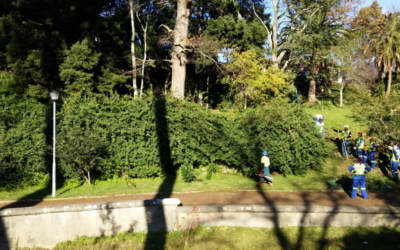Professor Neil Armitage’s talk on SUDS (Sustainable Urban Drainage Systems) raised so many important points that I want to expand on the topic. In the UK much research has been done, and one very interesting report available on the Internet is the CIRIA report on social impacts of SUDS (http://www.ciria.org.uk/suds/pdf/social_impact_summary.pdf).
They found that new and innovative drainage technologies must be designed to be accepted by the public. Poor public perception of SUDS may be a deterrent for developers in using them at new sites, as it can negatively influence buyers’ decisions to acquire property within the development. In contrast, positive attitudes towards SUDS can attract house-buyers and raise property values in developments where these systems are applied. The report stressed that unlike conventional drainage, SUDS are likely to form part of public open spaces. This promotes interaction between communities and their local environment and can also result in amenity benefits.
The report used a survey questionnaire to determine what people who lived near SUDS sites thought about the systems. Contrary to US results, people in the UK survey (92%) were aware of how their actions influenced catchment pollution, but there was a lack of awareness of SUDS specifically. People were more positive about ponds than swales, stating that “the attraction of wildlifento the ponds, the increase in the amenity and recreational value of the surrounding areas, the improvement of the landscape, and the environmental nature of the drainage methods, all played an important role in achieving positive attitudes towards the systems.” The people in the survey all thought busy roads were more of a danger than a pond, and a pond was considered safer than a river or a landfill. They understood the benefits of SUDS in reducing flood risk, and how SUDS generally improved the landscape.

The recommendations the report makes can be applied to the Liesbeek. People wanted ponds or in our case the river itself, to be as “natural” as possible, with planting of native species on the banks and slopes. The slopes should be gentle and deep water signs should be used. Benches should be introduced and picnic tables, walkways and children’s play areas considered. Land based and aquatic species should be encouraged to colonise the system. Litter and silt removal programmes should be given a high priority and clearing of inlets and outlets should be regularly undertaken. Marginal vegetation should be maintained. The report suggests that educational campaigns should be set up for local communities and interpretation boards should be introduced. These all have been recognised to be important on the Liesbeek, it only needs time and effort to implement – the Friends of the Liesbeek are definitely on the right track!


